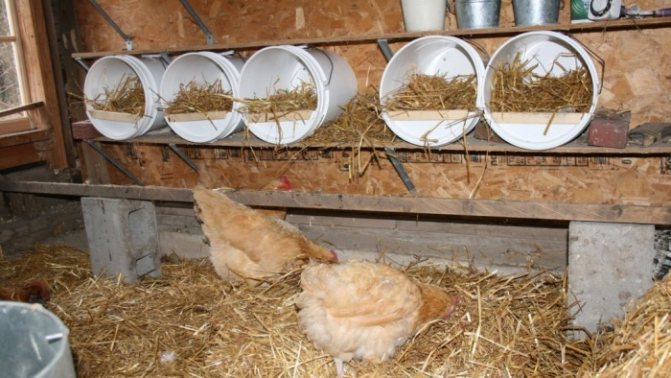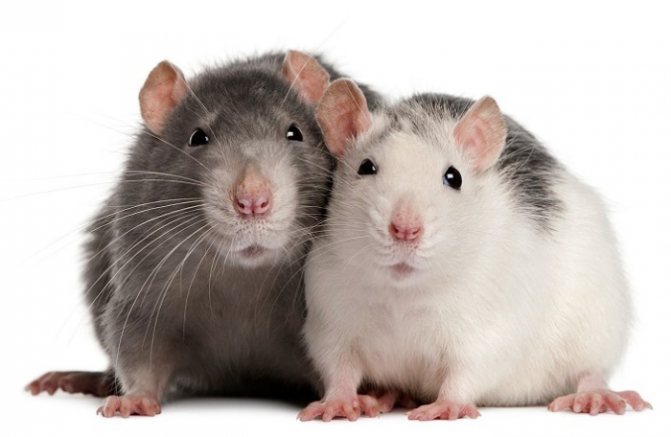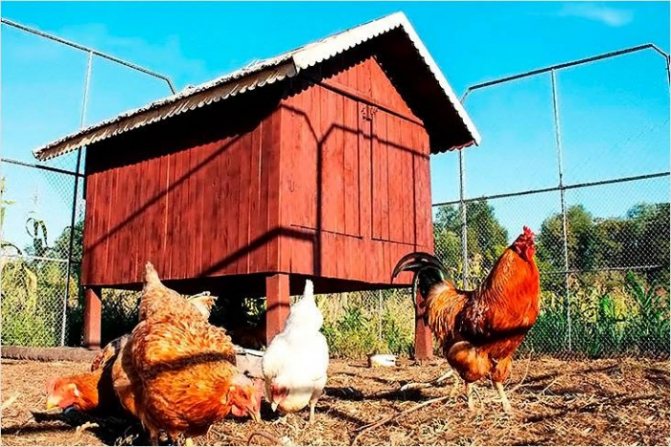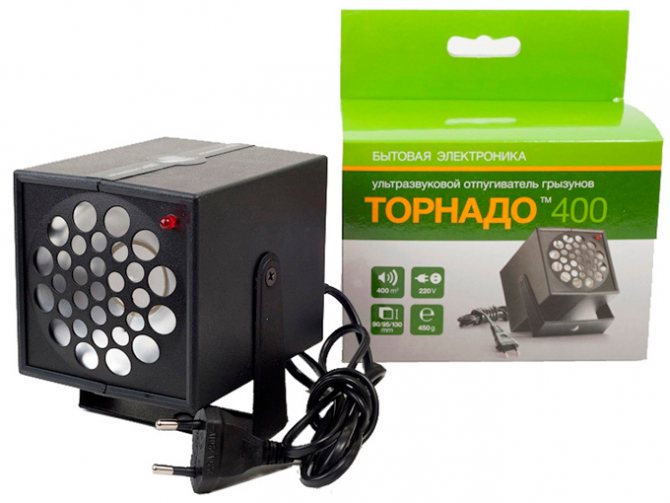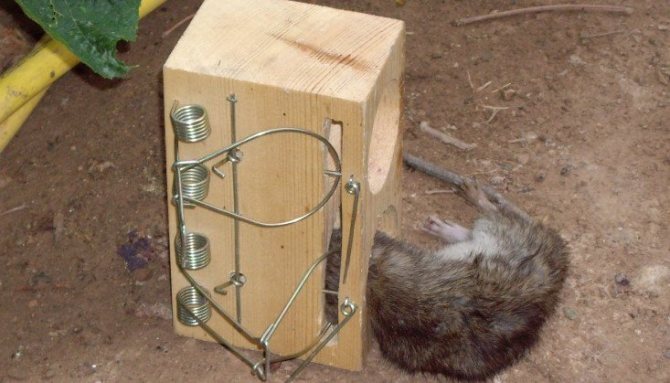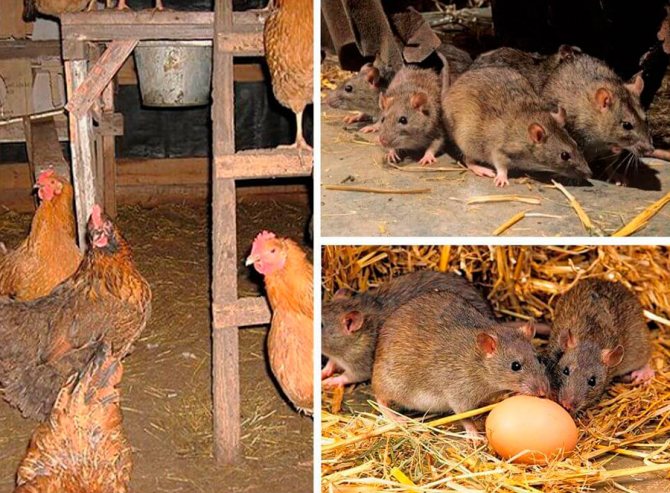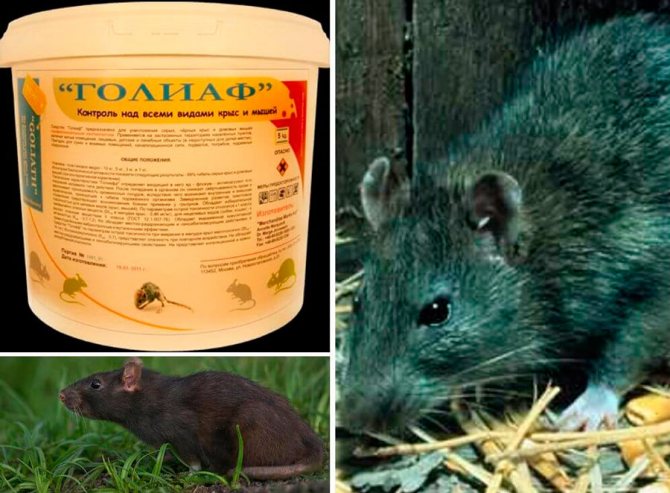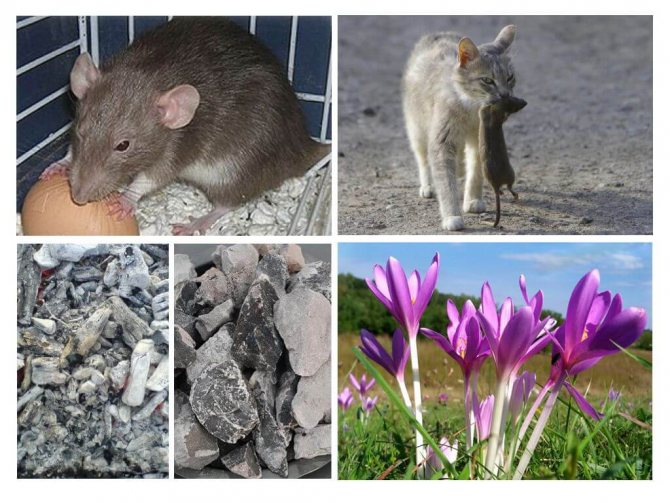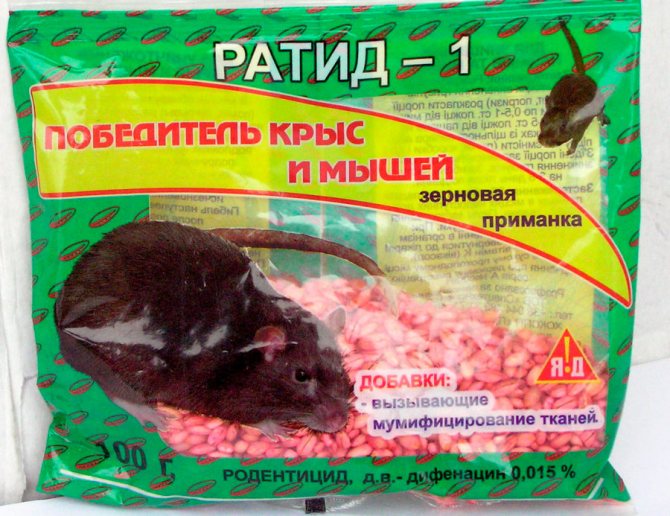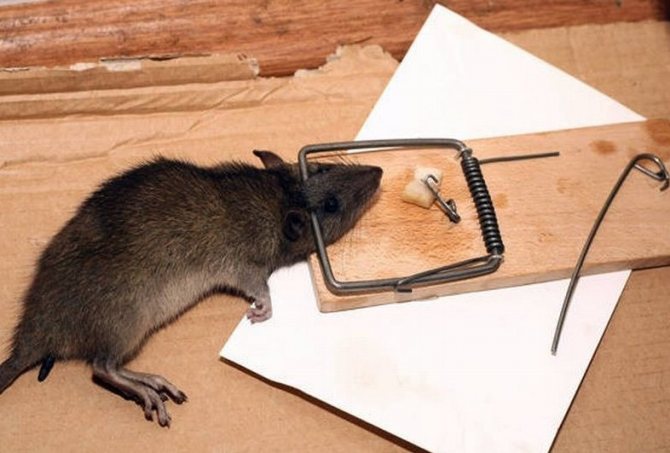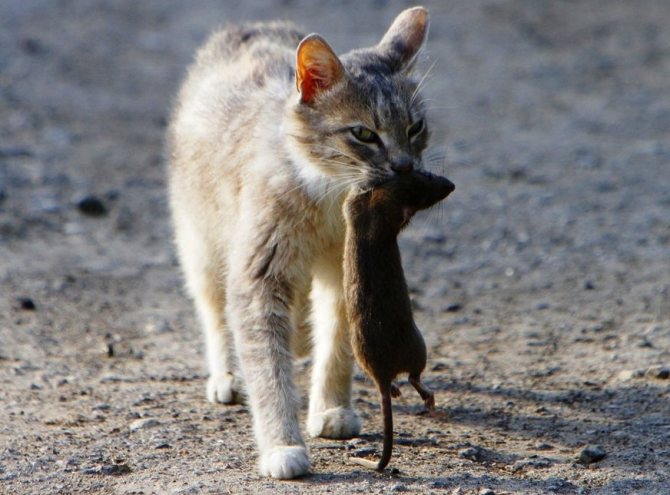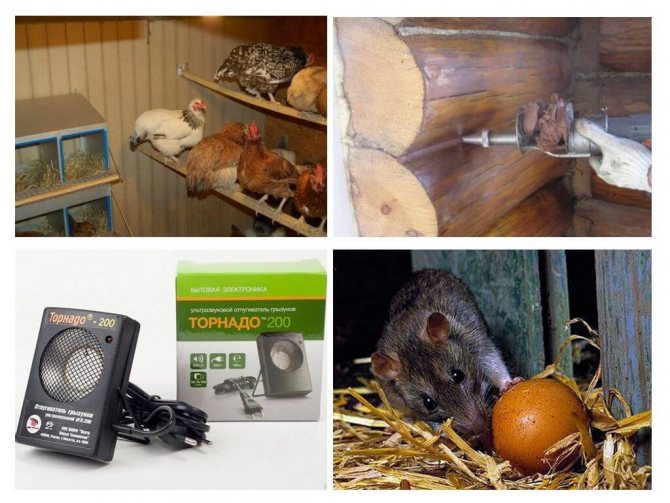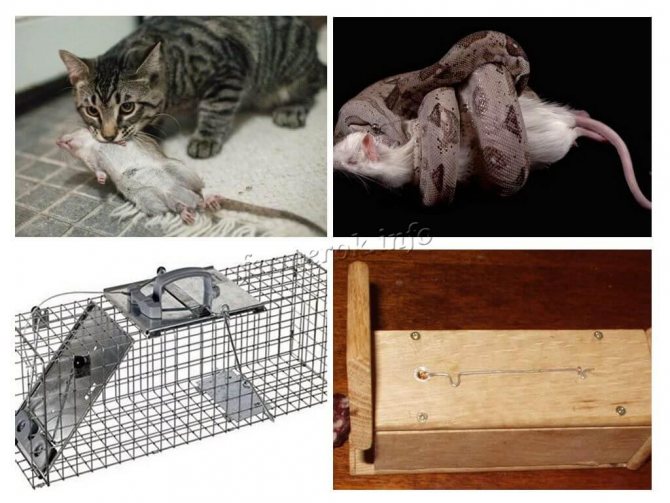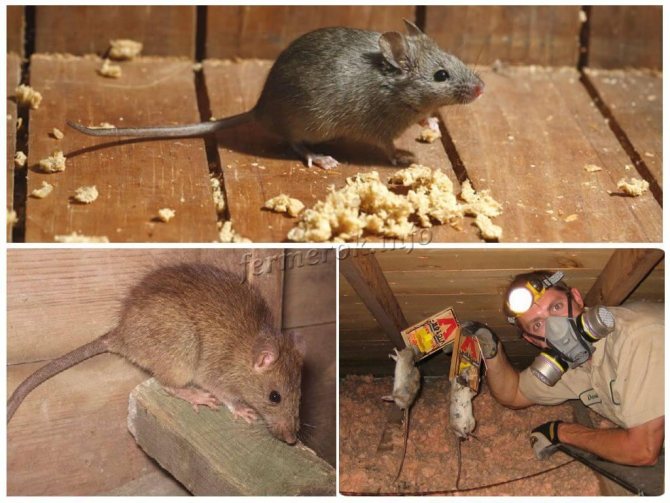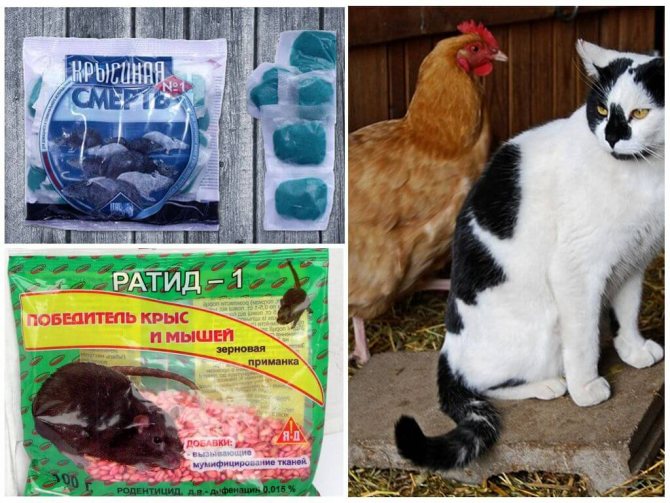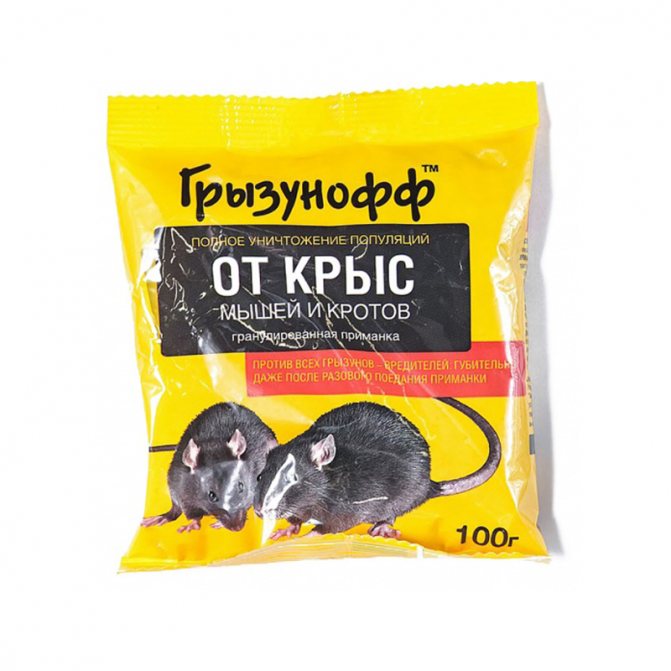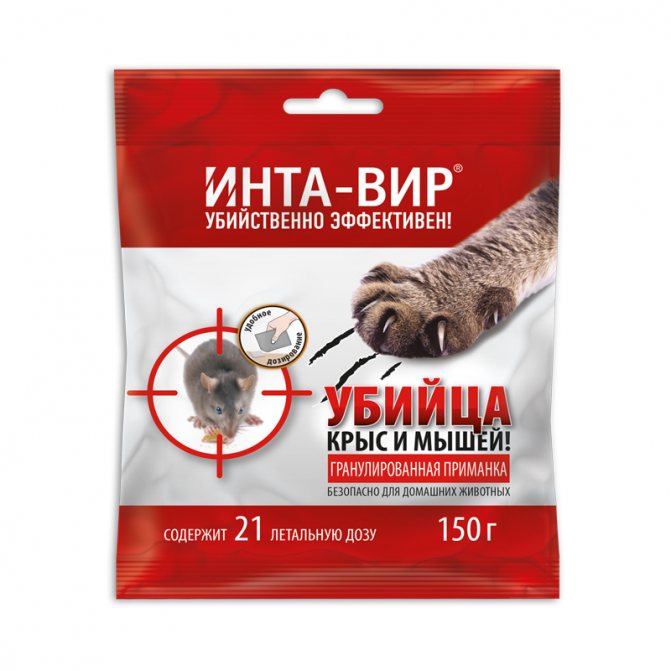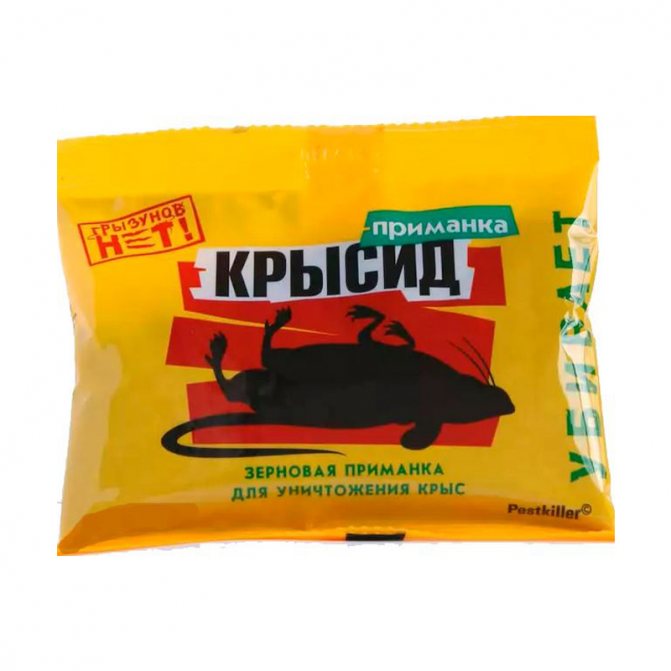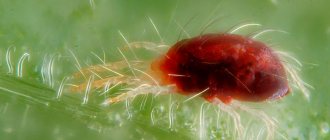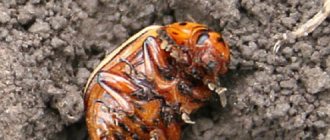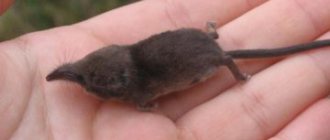The presence of rodents such as mice or rats in a chicken coop can be a real problem for the farmer. Among the harm they cause, poultry farmers note the theft and damage of eggs, the transfer of infectious diseases and helminths, damage to the structural elements of the chicken coop. Along with this, there is a high intelligence, excellent reflexes and well-developed group skills of the animal. This makes it difficult to choose rodent control methods to get rid of rats and mice in a chicken coop.
Under what conditions do rats appear?
The likelihood of the appearance of rats near the farm and near the chicken coop increases in late autumn. In summer, it is easy for rodents to find food among waste and in fields with crops. But when the crops are already harvested and it starts to get colder, the rats are drawn to the warmth, where there is water and a lot of food. The food for laying hens is an attractive treat for both birds and rodents. Farms, near which there are sown fields and forests, are especially affected by rat raids. These are sheds with winter supplies, cellars, poultry farms, farms.
Rats by the water
Remember! Rats build whole tunnels underground, so protective devices must be placed not only around, but also under the chicken dwelling.
Why are rats dangerous?
These animals with powerful mouthparts love to feast on tender chicken meat. Mice do not pose a danger to birds due to their small size. And rats are able to strangle and drag away not only newly hatched, but also three-week-old chickens. These rodents sense their appearance, being at a very great distance from the chicken coop. If you don't pay enough attention to this issue, you can lose a whole brood.
Rat mouth
But this is not the only problem with the appearance of rats. On their fur, they carry many skin parasites:
- scabies mites;
- chicken lice;
- fleas;
- eggs of helminth worms.
Chicken lice
Ticks, fleas and chicken lice often live and breed in chicken coops where the basic principles of bird keeping conditions are not observed. Namely:
- no litter;
- unsanitary conditions in cells;
- insufficient space for the appropriate number of birds;
- high humidity;
- there are no special sand fillers where birds clean their feathers and get rid of parasites on their own.
Main reasons
The chicken coop is an ideal place for rodents, where they can wait out frost and other unfavorable environmental conditions. In addition to this, there is a lot of food in the poultry house: in addition to the reserves of grain and compound feed intended for chickens, there is also an egg, which attracts with its smell.
The poultry house has a special passage through which birds can enter the walking area. It is he who is used by pests.
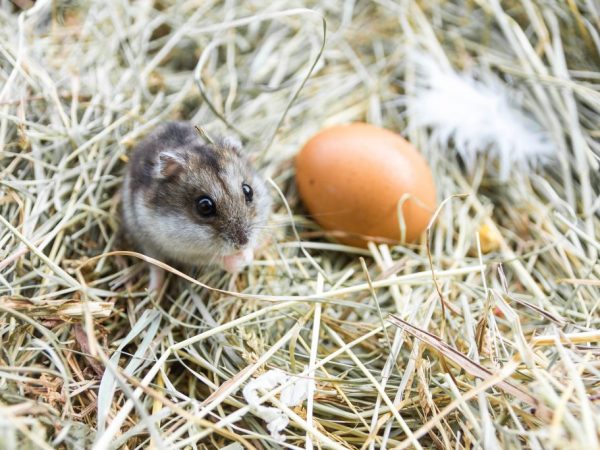
Mice not only eat all the grain in the chicken coop, but they also steal eggs.
The appearance of rats in the hen house may also be due to the lack of a foundation and the presence of an earthen (clay) floor. Therefore, it is better to build a solid structure rather than temporary shelter for chickens.
The floor is filled with one large layer of dense building material (concrete).Covers the top with another dense layer such as chipboard or fiberboard, and at the final stage, make a natural bedding of hay, straw or sawdust for insulation and moisture adsorption.
Pests can also be found in chicken coops built on high foundations or piles. The reason for this is simple - these pests move well not only on horizontal but also on vertical surfaces.
Rat-borne skin parasites
Ticks annoy chickens more than lice or fleas. They cause serious health problems in birds that affect skin and respiratory function. This can lead to the death of birds, especially among young individuals. Some species can live on birds for years, such as the Knemidokoptes mite that infects the bird's feet (scabies). The disease manifests itself in the form of inflammation and itching on the skin of the legs.
Chicken mite
Lice lay eggs in the feathers of birds, multiplying exponentially. Like fleas, they hide on the skin among the feathers, fluffing which you can see dark spots, similar to moles. This is chicken lice. Having multiplied, the parasites are able to completely cover the surface of the skin, so you need to get rid of them immediately.
How to get rid of lice in chickens
Infectious diseases that can be transmitted to humans through rats
In addition, rats are carriers of more serious diseases, such as:
- rabies. The most dangerous disease today, with 100% mortality. Leads to paralysis if the vaccine is not given in time. Carriers are wild and domestic animals.
- plague. A dangerous disease that affects the lymph nodes, lungs, causes fever and sepsis. Today, this disease is very rare and is treated thanks to advances in medicine, but rats are still carriers.
- typhoid. Causes diarrhea, headache, weakness, heart problems. Symptoms are similar to intoxication. It is spread by insects and rodents.
- toxoplasmosis. An infectious disease caused by parasites. And although about 60% of the population are asymptomatic carriers of a safe form of Toxoplasma, it can manifest itself during pregnancy, causing fetal death.
- leptospirosis. The disease affects the internal organs of a person, the work of the heart and breathing are disrupted. It is fraught with serious complications. It is treated with antibiotics.
- toxocariasis. Parasites that have settled in various areas of the body cause damage and disruption of the work of those. They are treated with anthelmintics.


Typhoid fever stick
From sick birds, these dangerous diseases can sometimes be transmitted to the owner, especially if he spends a lot of time in the chicken coop and has direct contact with everything that is there, cleans and nurses the birds, works without gloves. The pathogens are found in the saliva and droppings of rats. Routes of infection: airborne, contact and food.
Danger to chickens
The rat is a pretty strong predator. She is able to win a fight with a cat, and injure a dog. In the chicken coop, she feels free, calm, safe. Behaves in a boorish manner, systematically commits an attack on full-fledged residents.
Rats steal eggs from the hen house with an enviable systematicity. With a small number of laying hens, a person may be completely left without eggs. A rat is capable of attacking a chicken if it wants to taste fresh meat. The predator copes with young, adult birds with equal ease. Even a rooster will not interfere with the hunting process, the predator is able to bite strongly. Will engage in theft systematically.
On a note!
A rat can eat a whole chicken if it is very hungry. In other cases, he is engaged in looting. Kills birds, bites, leaves the carcass. The damage from the action of the rodent is colossal. Chickens will be strangled in a matter of days. Will attack every night.
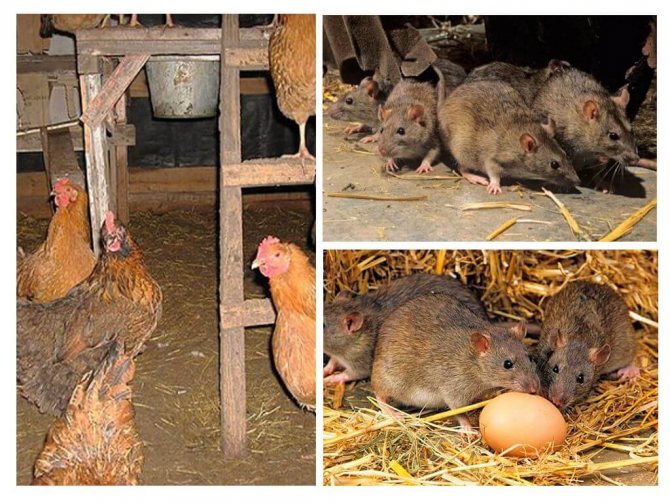

Rats in a chicken coop
It is necessary to protect the chicken coop from dangerous rodents in order to prevent the spread of infection. Rats carry dangerous diseases, transmit harmful parasites:
- typhus;
- toxoplasmosis;
- plague;
- toxocariasis;
- tularemia;
- rabies;
- soda;
- rickettsioses;
- leptospirosis;
- hemorrhagic fever;
- listeriosis;
- streptobacillosis.
Carries fleas, bedbugs, ticks. The causative agents of infection are found in saliva, feces, blood, wool, in the air exhaled by rodents. It is necessary to remove rats from the chicken coop for the safety of chickens, preservation of their own health.
Signs of the appearance of rats
Anyone who has been dealing with poultry or animal husbandry for a long time senses the presence of rats by a specific smell. Beginners should pay attention to other signs.
- Litter. Rat droppings are similar to mouse droppings, but much larger.
- New holes have appeared in the wall or floor of the hen house.
- A strangled young individual was found.
- There are gnawed wires or cables nearby.
Rat droppings
Important! If an adult bird has died for no apparent reason, an infection cannot be ruled out, which is often carried by rats.
Prevention measures against the appearance of rats
It is always easier to anticipate potential problems than to look for solutions later. There are a number of different ways, as rats are trick champions in the animal kingdom. They float excellently and penetrate holes, 4 times smaller than their own girth. They freely establish transitions inside the pipelines, and the walls are not an obstacle for them. In chicken coops, an earthen floor and clay walls are often used, which is not an obstacle for rats. They are very smart, tenacious and are rapidly rebuilding their populations.
Prevention measures against the appearance of rats
Rat poison
In order to prevent the appearance of rats near your chicken coop, you should follow a whole range of measures that will help to protect your farm.
The first thought that usually comes before taking measures to protect the chicken coop from rats is poison. Potent enough to kill a rat, the toxin also kills a chicken, so this option should be considered separately, with extreme caution.
Rat poisons
Rat poison prices
Rat poisons
Glass and rubble
First of all, do not be too lazy to pour finely broken glass mixed with rubble on the surface of the earth. The layer should be at least 15-20 cm, then the rats will not be able to find loopholes between the sharp edges of the glass. Do not be alarmed by the birds - finely broken glass is not able to cut the skin on their rough paws, unlike the fragile legs of rodents.
It is even safer to make a concrete foundation under the chicken coop, also mixed with broken glass. Rodents are able to gnaw concrete, but with glass they will not succeed. The process is low cost and very efficient.
| Step | Description | Photo |
| 1 | Before covering the floor of the chicken coop with concrete or other material, stock up on rubble. | |
| 2 | Prepare broken glass (use unnecessary glass containers). | |
| 3 | Mix the rubble with glass. | |
| 4 | Pour the mixture into the foundation so that it extends 15-20 cm outside the chicken coop from the outside. | |
| 5 | If there are holes in the walls, fill them with rubble and glass. | |
| 6 | Externally seal the hole as usual. | |
| 7 | It is advisable to enclose the walls with a fine mesh. |
Chicken coop walls
When building a chicken coop, make sure that no voids remain in the walls. If there are holes and cracks, it is necessary to close them up by filling them in advance with glass fragments. The use of glass wool is popular, but, as practice shows, rats have learned to overcome this obstacle as well. Some decorate the outside walls with iron sheets or glass trimmings.
As practice shows, glass wool is not a hindrance for rats.
The note! As an additional tool, you can plant plants that have thorns and thorns next to the hen house. It can be wild rose, rose, burdock or gooseberry. The sharp ends cling to the rat's fur, this makes it nervous and it instinctively avoids this place.
Video - Wall decoration for a chicken coop
Ways to fight rats using animals
The people use means of fighting rodents when another animal comes to the rescue, which is at war with rats. Some keep geese with chickens. These birds are much larger and stronger than chickens. The sleep of geese, unlike chicken, is very sensitive, and they can frighten off rats, which, as a rule, wield at night. With a powerful blow from its beak, a goose is able to kill or at least frighten off a rat for a long time.
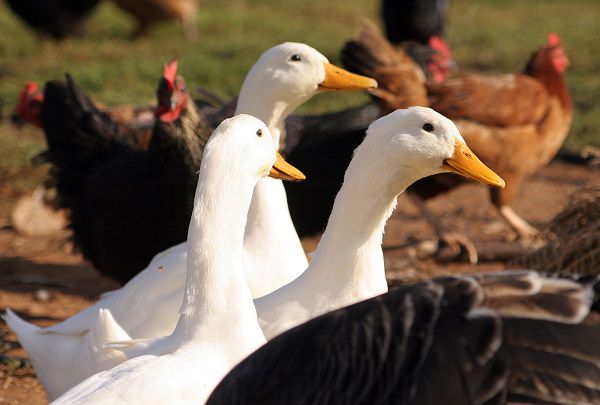

Joint keeping of chickens and geese
It's good if a hedgehog was seen nearby in the area. This night hunter is an old enemy of rats and other rodents, so at night the chicken coop will be protected by this thorny guard.
Hedgehog
Main hunter-rat trap
The main rat hunter is a yard cat. It is the courtyard, and it is the female. Pedigree cats are usually not just at rats, but also at mice look indifferently. The yard cat has a particularly pronounced hunting instinct. There are whole broods of cats in the family of which females are famous for their rat hunting. Kittens of these cats, as a rule, are snapped up in villages and on poultry farms. Often, even only the smell of a cat can scare away a predator.
Rat catcher
Caution! If, along with the presence of a cat in the household, pesticides are used, it is necessary to trace how the animal hunts. If the cat has a habit of eating part of the rodent, then it can harm its health if the rat is poisoned.
conclusions
- Rodents, ferrets and weasels are the most dangerous animals for chickens. They steal food, kill birds and carry various diseases.
- You can get rid of rats or mice with simple traps, poison or ultrasound. With regular attacks, it is important to develop preventive measures.
- Ferrets can kill more birds than they can eat in a single visit to the chicken coop. You can get rid of them with the help of trap # 1 or homemade traps.
- Weasels and martens are cautious animals that will not take unnecessary risks. Large birds or a dog can scare them away. If an attack occurs, you should use traps, or catch the animal with your own hands.
Read about vaccination of chickens at home here.
Practical methods of scaring away rats
There are several methods for repelling and controlling rats:
- Mechanical.
- Biological.
- Chemical (they are also medicinal).
- Ultrasonic.
Mechanical
Mousetraps and rat traps are well suited for an apartment where the invasion of rats, fortunately, is only counted by a few. In a village or village where chicken coops the size of a small house are often installed, this method is simply not enough. Recently, glue traps are gaining popularity, when boards, plywood or cardboard are installed around the territory, on which special glue is applied. Stepping on it, the animal immediately sticks to it. Desperate attempts to escape only aggravate his situation and the rat only loses strength. Despite some cruelty of this measure, glue traps successfully block the way for rats to reach the chicken coop.
Rat trap
Interesting! There is a version that rats have a collective intelligence and sense danger. Sensing the suffering or the corpse of their kindred, they can stop, suspecting something was wrong.
Rat trap prices
Rat trap
Biological
These methods include the fight against rodents with the help of some plants, the smells of which are afraid of rats. Mint or black elderberry can be harvested in the field or in the vegetable garden. Pieces of cloth are impregnated with a strong infusion of peppermint, which is then placed in rat holes.Elderberry branches are crushed raw and laid out throughout the chicken coop, not forgetting to lay them in the burrows. But these methods are effective when the number of harmful animals is calculated by several individuals. A large number of rodents are not afraid of either mint or elderberry.
Elderberry and mint
Some farmers advise, as a method of scaring away rodents, burnt wool, which is set on fire and scattered over the rat holes. (You can set fire to a woolen sock or an old shawl, for example). The smell scares the predator, and it leaves this place.
Chemical or medicinal methods
Chemical methods include the use of pesticides. These are rodenticides, chemicals that disrupt important body functions in small warm-blooded animals. Available in the form of aerosols, dry mix, paste or suspension. This is an effective method, but it has several drawbacks. The first and foremost is that not only rats, but also birds and pets can suffer from their use. You need to lay the poison very carefully, laying it deep in the burrows, where the chickens cannot reach them. In addition, farmers observe one regularity - the rats gradually develop immunity to known types of chemicals, which forces them to select new types of poison.
Pesticide
| Name | Properties | Negative properties |
| "Mortorat" | Intestinal pesticide. Flavors (cheese, vanilla, grain). Contains a bitter ingredient to prevent it from being eaten by birds. Mummifies a corpse. | Toxic |
| "Goliath" | Rodenticide, blocks blood clotting in rodents, mummifies a corpse. Causes oxygen starvation, does not act immediately, kills from asphyxia. Not addictive to poison. | Dangerous for pets, especially dogs |
| "Krysid" | An additive to the bait, breaks breathing, does not kill immediately. | High volatility of the drug, addictive |
| "Rat Death" | Brodifacum; reliability, components attractive to rodents. | Highly toxic |
| "Ratindan" | Difenacin, bait or food additive. Destroys the walls of the vessels of the animal. | Highly toxic |
| "Storm" | Flocumafen, blocks blood clotting. Mummifies, non-addictive. | Highly toxic |
Ultrasonic scarers
This method has gained noticeable popularity. There are small battery-operated appliances operating over a small area, and there are serious mains-powered installations for large areas.
Such a device does not destroy rodents, however, it scares away and drives away. Devices with such an effect were invented a long time ago, but for these purposes they began to be used relatively recently.
Ultrasonic Repeller Grad
Rats communicate with each other using ultrasound. Only low or high frequencies are available to their ears. Ultrasonic devices "speak" to rats in their language, which is not audible to humans. By emitting ultrasonic waves, the device affects the nervous system of animals, causing them anxiety and panic. They lose their orientation in space and are forced to flee to a safer place.
Important! The waves of the repeller are not able to pass through obstacles, therefore, the device must be used in an open space, directly in the places of rat raids.
Repeller Typhoon
Installed inside the hen house, the ultrasonic device will not create problems for birds, scaring away only rodents. It is necessary to choose a device whose functions include the ability to change the frequency of the waves sent. This will prevent rodents from getting used to one specific sound. The device should be chosen based on the required territory. If the chicken coop consists of two or more parts separated from each other, then it would be rational to install one low-power device in each compartment, and not one more powerful one for the entire chicken coop.
On a note! Do not forget to install an outlet in the hen house, in case you have to choose this particular method of rodent control.
Video - Which repeller to choose
Rodent repeller prices
Rodent repeller
How to get rid of rats in a chicken coop forever
Modern advances combined with proven knowledge of how to deal with rats in a chicken coop allows the poultry farmer to solve the problem in his favor.
Animals
Man has always used the qualities of tamed animals to protect his home from various misfortunes, including rats.
- Let turkeys live with chickens, geese are large and strong birds that sleep lightly and can strike with their beak in case of danger. After meeting such inhabitants, the rats will not want to make further visits to the chicken coop.
- It's not bad if a hedgehog has settled in the garden - a small predator is quite capable of warding off rats, but you need to keep in mind that he himself is not averse to eating eggs and chickens.
- The cat is usually quite small, nimble - it is better to take a female, since cats are often too lazy to hunt.
- Pied Piper is a fox bred specifically for hunting rats (in Great Britain they are kept in flocks in warehouses). Dachshunds work great, as well as bull terriers - there is a compact variety with a completely full-sized hunting instinct and grip.
If animals are used, then it is better to forget about poisons - even a partially eaten or just torn rat can cause poisoning and death.
Rat trap
Devices that kill rodents - a metal bracket or, more modernly, an electrical discharge.
This type of extermination of rats is difficult to apply if a cat or dog is hunting in the chicken coop. The chickens themselves can also be caught if they find the device.
Traps
Traps that are safe for chickens are used directly in the chicken coop:
- a glass jar with a bait at the bottom - the walls are oiled, so the animal cannot get out.
- flower pot trap: the edge of the pot is lifted up with a small pebble, the bait is attached to its bottom. The rodent, grabbing the bait, knocks out a pebble and is under the pot. It must be placed on a sheet of iron so that the animal does not undermine it.
They also make more sophisticated devices that are hung or dug into the earthen floor. However, it must be remembered that the trap will have to be emptied - that is, to kill the rodent or to transport it to a distant link - away from the chicken coop.
Biological methods
Biological methods involve repelling natural odors. They are not poisonous, but rats do not like them.
- Mint - thickets of mint around the hen house and sources of smell, placed in places where rodents visit, in their burrows. For this, a strong infusion of mint is prepared, with which pieces of fabric are soaked.
- Elder - lay out broken branches.
- Turpentine or kerosene - rags soaked in these liquids are laid out in corners and manholes.
- Naphthalene mixed with sawdust and poured in the corners.
However, it should be noted that this will not be an obstacle to the horde of hungry rats on the way to warmth and food. Therefore, folk remedies based on the use of smells work better as prevention, but what if all else fails?
There is a way that works to suppress the psyche of rats - for a poultry farmer with strong nerves.
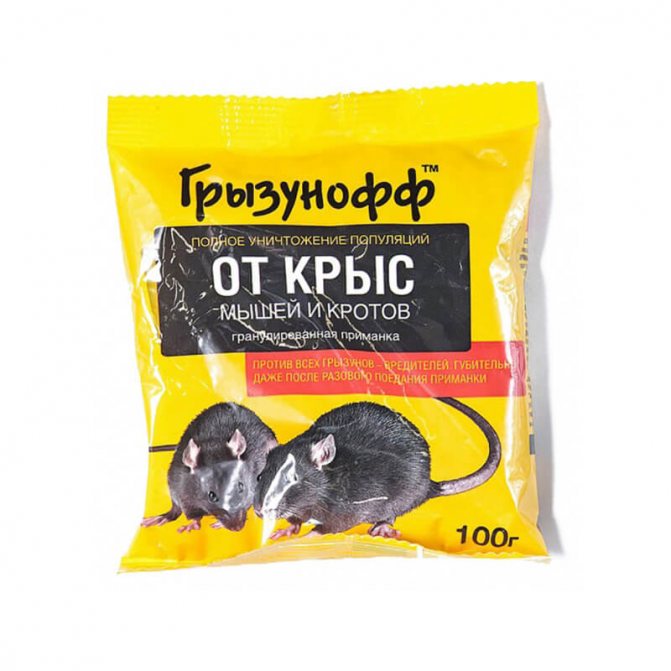

The caught rat is doused with gasoline and burned alive. Do this in the place of visiting rodents. The method is designed for the collective mind of animals - feeling the torment of a relative, they will fall into horror. A burning rat fumigates all corners of the chicken coop, holes. After that, you can leave the carcass near the burrow. After that, you can be sure that they will go away, at least for a long time.
A softer option would be to burn a piece of natural wool and lay out the burnt pieces in the holes.
Chemistry or drugs
Chemical agents for rats are poisons, the action of which is aimed at disrupting the basic vital functions of animals.
The use of poisons is extremely dangerous - chickens, other animals, even humans can be poisoned.
It should be borne in mind that, unlike other warm-blooded animals, rats quite successfully develop immunity to poisons. This will force you to constantly pick up new types of poison.
For those who decide to organize the extermination of rats by using poisons, a few tips:
- it is better to choose substances that mummify a dead animal
- many poisons contain elements that make the poison unattractive to the bird
- the poison is placed in burrows as deep as possible so that no one eats, except for the addressee
- cats, dogs should be isolated from the place of application of poisons.
And also it should be remembered that a poisoned rodent can die near the house, which will create a danger for everyone.
Scarers
A method that is good for its humanity is the emitter of waves at a certain frequency perceived by rodents, causing them to panic and fear. They stop visiting the chicken coop forever.
There are many types of devices, for different areas with different intensities and functionality. The device is quite safe for humans, however, many manufacturers do not advise to constantly be in the affected area.
When buying, it should be borne in mind that ultrasound is not able to pass through walls, so it is better to take the number of devices according to the number of rooms. The power is selected according to the area, while it is better to take it with a slight excess.
The instructions for the device should contain an indication of the use of different frequencies - to prevent the animals from getting used to a certain frequency.
Also pay attention to the presence of a timer - turning on the emitter at different times will confuse the rats, and they will not be able to understand at what time it is possible to get into the chicken coop.
After installing the repeller, you must not immediately close up the holes and cracks. Ultrasound knocks out the psyche of rats. Individuals caught in a trap, finding no way out, will go mad and begin to attack everyone.
Traditional methods of fighting rats
Several old folk tricks involve the use of ordinary wood ash, gypsum or alabaster with flour, ordinary cork.
- Finely crushed ash is scattered around the chicken coop at the rate of 1 bucket per 6-8 sq / m. Ash contains alkali, which, once it gets on the legs of a rodent, eats them away. The animal begins to lick the ash, it gets into the mouth and stomach, aggravating the position of the rodent. He can only leave this place. Ash is absolutely harmless to birds and humans, except that it can thoroughly stain nearby areas.
Ash - After mixing wheat flour and stucco in a ratio of 1: 1, the resulting mixture is left in a bowl as food for rats. Place a container of water nearby. After drinking water after such food, the rat soon dies, as the gypsum in its stomach turns to stone and indigestion occurs.
Flour with alabaster - Fry the sliced wine cork in flour and sunflower oil, then scatter with finely chopped pieces of dry bread. The cork swollen in the rat's stomach becomes its last meal.
Remember! Rats smell human scent and are very suspicious. It is necessary to prepare the bait with gloves, having fed the predators with food in advance for several days without a "surprise".
Bait
They also fight rats with a substance called carbide. Filled with water, carbide is thrown into holes, where it begins to emit gas. This gas is safe for chickens and for humans, but it poisons rats. Additionally, you can cover the burrows with earth.
Caution! When using carbide, remember that the substance is explosive and do not spread it near burning objects.
Application of poison
How to exterminate rodents, each chicken owner chooses individually. When using poison, some nuances should be taken into account. Do not place edible baits in a place accessible to chickens. If possible, the poison for the rats is crammed into holes, crevices.
From rats in the chicken coop, no powder is used, scattered around the perimeter. It is dangerous to destroy with tablets, briquettes. Smoke curious birds, they will want to try everything.
If there is an urgent need to poison rats, you need to temporarily move the chickens to another room. In this case, any fast acting rat poison can be used. An effective remedy for Ratin. The minimum dose of the drug in the stomach causes fatal poisoning. It is enough to swallow a small piece. You can kill rodents in a week.
On a note!
You can poison rats with edible baits, mixing a poisonous substance into raw meat, fish, bacon. Rodents are equally fond of salty and sweet. You need to use a product with a strong smell as bait. Spoiled meat, lard will be just right.
What are the baits
In order to feed her poison, the rat must be attracted. And the more tempting the bait is, the faster the rats will eat it. We have already noticed that these are very intelligent and careful animals. Therefore, before giving them a bait with poison, you need to give them some getting used to, to understand that the delicacy is safe. To do this, feed the rats for several days without adding chemicals. And only by lulling their vigilance, you can add toxic substances.
Different types of baits
Some products already contain ingredients that are attractive to rats: grain, flour or sugar. Some are supplemented with flavorings: cheese, meat, vanilla. Others should be used as a supplement to foods. To do this, use such attractive delicacies for rodents as:
- bread crumbs soaked in unrefined sunflower oil;
- boiled porridge;
- minced meat (with onions);
- corn;
- cheese;
- crumbled eggs;
- smoked bacon;
- fried sunflower seeds;
- dry cat or dog food.
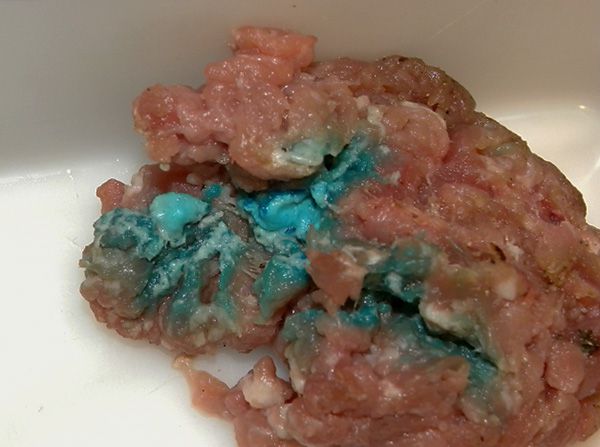

Minced meat with poison
How to protect a bird from eating poison
You cannot explain to the legal inhabitants of the chicken coop that baits and poisons are the lot of rodents only. To protect birds from poisoning, the following precautions must be followed when handling chemicals:
- Temporarily transfer the birds to another location.
- Place the bait with chemicals in special traps where chickens and chickens will not get in, for example, boxes with several inlets on the sides.
- Constantly clean up rodent corpses.
- Spread poisons (2-3 grams of mixture per mink) deep into rat holes, sprinkle with earth.
- Use a granulating agent to avoid spraying it around the coop.
- Do not sprinkle chicken feed near scattered baits.
- If possible, put up a house for sleeping chickens in the air (on legs).
Legged chicken coop
How to ventilate and clean the room after treatment
After processing in the chicken coop with pesticides and before settling chickens in it, you need to clean and air the room. All animal corpses must be removed and disposed of, the room and all the devices available in it (feeders, drinkers, perches) are washed and cleaned, it will not hurt to process the walls with lime. If food remains in the coop, it should be thoroughly swept out and discarded. The last stage is to ventilate the room, preferably within a few days.
Precautions
When dealing with rats with chemicals, do not forget to take precautions!
- Use protective gloves to cook and lay out the food.
- Do not use near other foods, children, pets.
- Wash your hands thoroughly with soap and water after finishing treatments.
- Remove poisoned corpses in time.
Use chemicals with a mummification effect to avoid breathing in the decaying smell, as the rat can die in a hard-to-reach place.
What to do if the rats don't leave
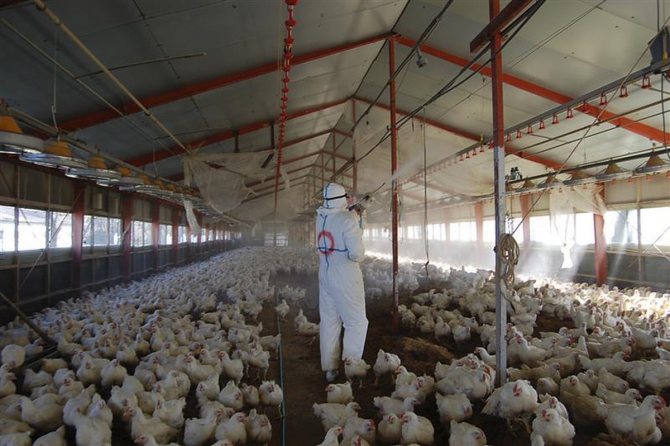

Treatment of a chicken coop by a sanitary inspector
If folk and purchased remedies do not help and the rats continue to attack the poultry house and cause harm, you will have to turn to professionals and remove the pests with radical measures.Specialists will pick up effective pesticides, carry out deratization and take dead individuals with them. Specialized firms use potent poisonous gases with which they fumigate both rat holes and the entire room as a whole. For the safety of chickens, they will have to be relocated to another room for several days.

